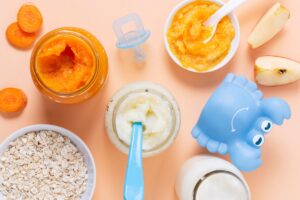
Can We Teach Intuitive Eating In Kids With Metabolic Syndrome?
By Shannon Herbert, PhD, RD, RYT, CDN What is metabolic syndrome? Metabolic syndrome is a group of conditions that can increase one’s risk for heart disease, stroke, and type 2


By Shannon Herbert, PhD, RD, RYT, CDN What is metabolic syndrome? Metabolic syndrome is a group of conditions that can increase one’s risk for heart disease, stroke, and type 2

By Shannon Herbert, PhD, RD, RYT, CDN 5 Body Positive Nutrition Books for Kids Here are 5 awesome book ideas that can serve as resources to aid in navigating teen’s

Food Tricks and Tools to Treat POTS and EDS We are sharing some tricks and tools to treat postural orthostatic tachycardia syndrome (POTS) and Ehlers-Danlos Syndrome (EDS). The two conditions

Understanding Dysautonomia: What It Is, Causes, Symptoms, and Treatments Have you ever wondered why your heart races when you’re scared or why your stomach churns during stressful moments? These reactions

By The LCWNS Team Caring For Babies with FPIES Food Allergy Parents and caregivers of young children with food allergies face a myriad of complexities and anxieties when it comes

By LCWNS team How to Wean Your Baby Everyone knows that good nutrition is essential for children to grow healthy and strong. But as a new parent, you may feel

From The Best Baby Food Maker To Baby Food Storage, This Is The Equipment You Need Hey moms and dads! Ever wanted to make your own baby food but are not

By LCWNS Team What is the Relationship Between POTS and Eating Disorders? When you get out of bed in the morning, you probably are not thinking about regulating your heart

Do ‘Shrooms’ hold the key to mental health treatments? By Gabrielle Finora and the Team at LCWNS What is Psilocybin and How Does it Work? Psilocybin is the active chemical

Using Somatic Therapy to Treat Eating Eating disorders are complex mental health conditions that affect millions worldwide. The journey to recovery is often multifaceted, requiring a blend of psychological,

Sign up for Laura Cipullo’s Nutrition & Wellness Newsletter to receive expert guidance on mindful eating, balanced nutrition tips, and practical advice for living a healthier, happier life. Choose what topics you want to hear about to get the resources you need.

Copyright © 2024 Laura Cipullo